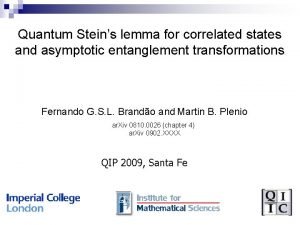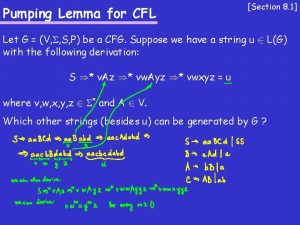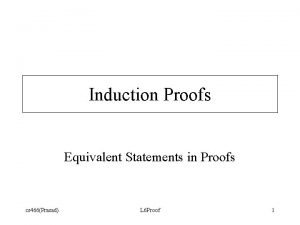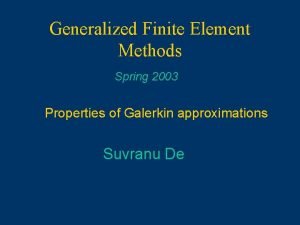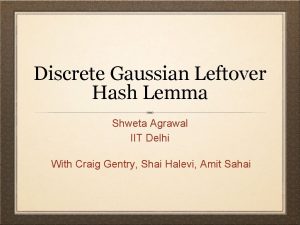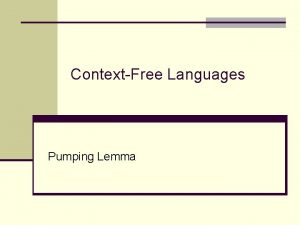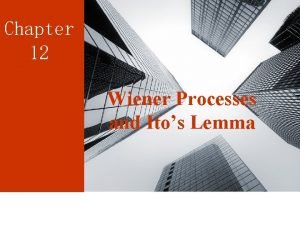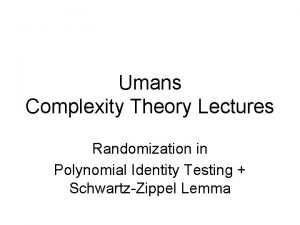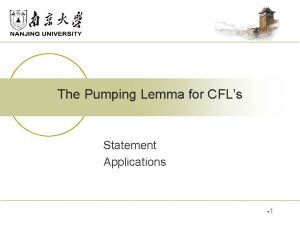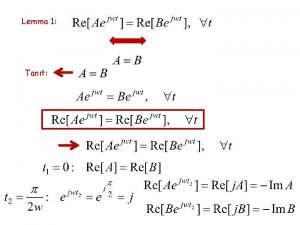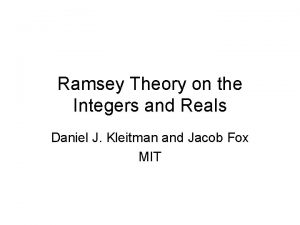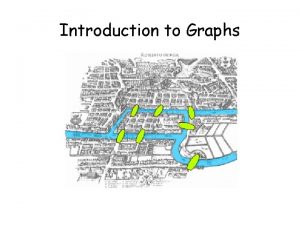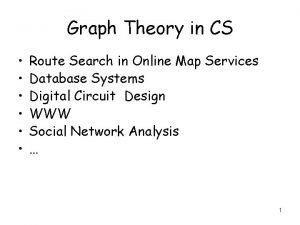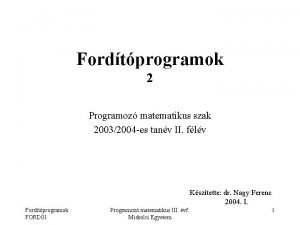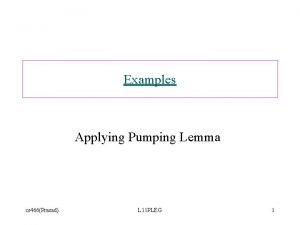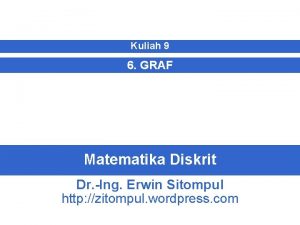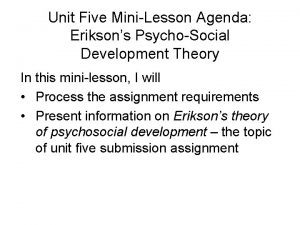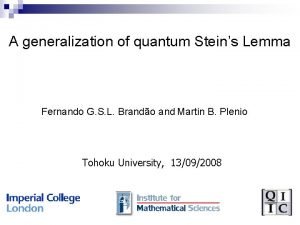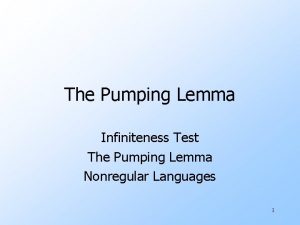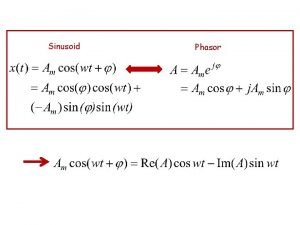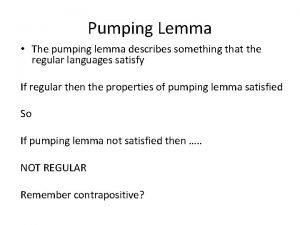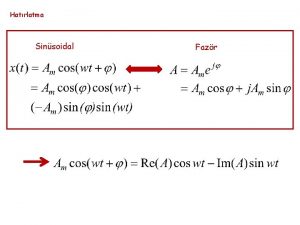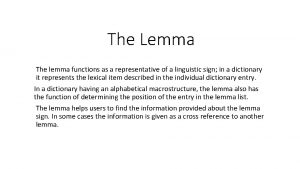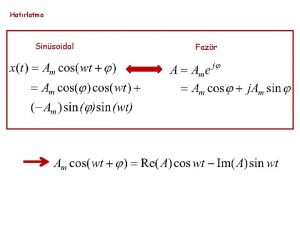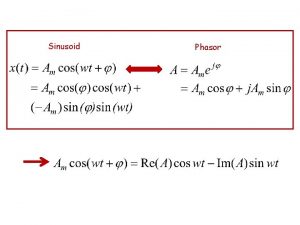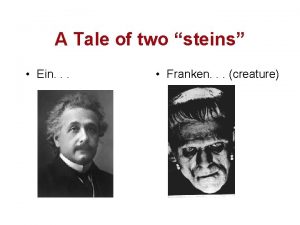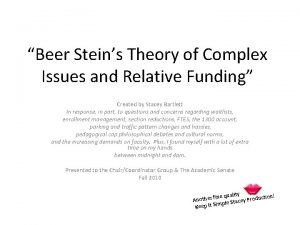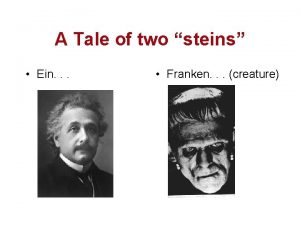Role of Steins Lemma in Guaranteed Training of














![Moments of a Neural Network y E[y|x] : = f (x) = (a 2 Moments of a Neural Network y E[y|x] : = f (x) = (a 2](https://slidetodoc.com/presentation_image_h/04ccd50a6a3e48dd33015fdbe17cf5c3/image-15.jpg)
![Moments of a Neural Network y E[y|x] : = f (x) = (a 2 Moments of a Neural Network y E[y|x] : = f (x) = (a 2](https://slidetodoc.com/presentation_image_h/04ccd50a6a3e48dd33015fdbe17cf5c3/image-16.jpg)
![Moments of a Neural Network y E[y|x] : = f (x) = (a 2 Moments of a Neural Network y E[y|x] : = f (x) = (a 2](https://slidetodoc.com/presentation_image_h/04ccd50a6a3e48dd33015fdbe17cf5c3/image-17.jpg)
![Moments of a Neural Network y E[y|x] : = f (x) = (a 2 Moments of a Neural Network y E[y|x] : = f (x) = (a 2](https://slidetodoc.com/presentation_image_h/04ccd50a6a3e48dd33015fdbe17cf5c3/image-18.jpg)
![Moments of a Neural Network y E[y|x] : = f (x) = (a 2 Moments of a Neural Network y E[y|x] : = f (x) = (a 2](https://slidetodoc.com/presentation_image_h/04ccd50a6a3e48dd33015fdbe17cf5c3/image-19.jpg)
![Moments of a Neural Network y E[y|x] : = f (x) = (a 2 Moments of a Neural Network y E[y|x] : = f (x) = (a 2](https://slidetodoc.com/presentation_image_h/04ccd50a6a3e48dd33015fdbe17cf5c3/image-20.jpg)
![Moments of a Neural Network y E[y|x] : = f (x) = (a 2 Moments of a Neural Network y E[y|x] : = f (x) = (a 2](https://slidetodoc.com/presentation_image_h/04ccd50a6a3e48dd33015fdbe17cf5c3/image-21.jpg)








![Training Neural Networks with Tensors Realizable: E[y · S m (x)] has CP tensor Training Neural Networks with Tensors Realizable: E[y · S m (x)] has CP tensor](https://slidetodoc.com/presentation_image_h/04ccd50a6a3e48dd33015fdbe17cf5c3/image-30.jpg)
![Training Neural Networks with Tensors Realizable: E[y · S m (x)] has tensor decomposition. Training Neural Networks with Tensors Realizable: E[y · S m (x)] has tensor decomposition.](https://slidetodoc.com/presentation_image_h/04ccd50a6a3e48dd33015fdbe17cf5c3/image-31.jpg)



























- Slides: 58

Role of Stein’s Lemma in Guaranteed Training of Neural Networks Anima Anandkumar NVIDIA and Caltech

Non-Convex Optimization ► Unique optimum: global/local ► ► Multiple local optima In high dimensions possibly exponential local optima How to deal with the challenge of non-convexity? Finding the global optimum 3 / 33

Local Optima in Neural Networks Example of Failure of Backpropagation y y = − 1 Local optimum y=1 σ(·) x 1 x 2 Global optimum x Exponential (in dimensions) no. of local optima for backpropagation

Guaranteed Learning through Tensor Methods Replace the objective function Cross Entropy vs. Best Tensor decomp. arg min I T (x) − T (θ)I 2 F θ T (x): empirical tensor, T (θ): low rank tensor based on θ. Preserves Global Optimum (infinite samples) Dataset 1 Finding globally opt tensor decomposition Simple algorithms succeed under mild and natural conditions for many learning problems. Dataset 2 Model Class

Why Tensors? Method of Moments

Matrix vs. Tensor: Why Tensors are Necessary?

Matrix vs. Tensor: Why Tensors are Necessary?

Matrix vs. Tensor: Why Tensors are Necessary?

Matrix vs. Tensor: Why Tensors are Necessary?

From Matrix to Tensor

From Matrix to Tensor

From Matrix to Tensor

Guaranteed Training of Neural Networks using Tensor Decomposition Majid Janzamin Hanie Sedghi

Method of Moments for a Neural Network ► Supervised setting: observing { (x i , y i )} ► Non-linear transformations via activating function σ(·) Random x and y: Moment possibilities: E[y ⊗ y], E[y ⊗ x], ► . . . y σ(·) ⇒ A 1 x x 1 x 2 x 3 E[y ⊗ x] = E[σ(A T 1 x) ⊗ x] No linear transformation of A 1. × One solution: Linearization by using Stein’s Lemma σ(A T 1 x ) Derivative −−−−−−→ σ'(·)A 1 T 26/ 33
![Moments of a Neural Network y Eyx f x a 2 Moments of a Neural Network y E[y|x] : = f (x) = (a 2](https://slidetodoc.com/presentation_image_h/04ccd50a6a3e48dd33015fdbe17cf5c3/image-15.jpg)
Moments of a Neural Network y E[y|x] : = f (x) = (a 2 , σ(AT 1 x)) a 2 σ(·) x x 1 � � � A 1 = � � � σ(·) x 2 x 3 “Score Function Features for Discriminative Learning: Matrix and Tensor Framework” by M. Janzamin, H. Sedghi, and A. , Dec. 2014.
![Moments of a Neural Network y Eyx f x a 2 Moments of a Neural Network y E[y|x] : = f (x) = (a 2](https://slidetodoc.com/presentation_image_h/04ccd50a6a3e48dd33015fdbe17cf5c3/image-16.jpg)
Moments of a Neural Network y E[y|x] : = f (x) = (a 2 , σ(AT 1 x)) a 2 � � � A 1 = � � � σ (·) Moments using score functions S(·) x x 1 x 2 x 3 “Score Function Features for Discriminative Learning: Matrix and Tensor Framework” by M. Janzamin, H. Sedghi, and A. , Dec. 2014.
![Moments of a Neural Network y Eyx f x a 2 Moments of a Neural Network y E[y|x] : = f (x) = (a 2](https://slidetodoc.com/presentation_image_h/04ccd50a6a3e48dd33015fdbe17cf5c3/image-17.jpg)
Moments of a Neural Network y E[y|x] : = f (x) = (a 2 , σ(AT 1 x)) a 2 E [y · S 1(x)] = + � � � A 1 = � � � σ (·) Moments using score functions S(·) x x 1 x 2 x 3 “Score Function Features for Discriminative Learning: Matrix and Tensor Framework” by M. Janzamin, H. Sedghi, and A. , Dec. 2014.
![Moments of a Neural Network y Eyx f x a 2 Moments of a Neural Network y E[y|x] : = f (x) = (a 2](https://slidetodoc.com/presentation_image_h/04ccd50a6a3e48dd33015fdbe17cf5c3/image-18.jpg)
Moments of a Neural Network y E[y|x] : = f (x) = (a 2 , σ(AT 1 x)) a 2 E [y · S 2(x)] = + � � � A 1 = � � � σ (·) Moments using score functions S(·) x x 1 x 2 x 3 “Score Function Features for Discriminative Learning: Matrix and Tensor Framework” by M. Janzamin, H. Sedghi, and A. , Dec. 2014.
![Moments of a Neural Network y Eyx f x a 2 Moments of a Neural Network y E[y|x] : = f (x) = (a 2](https://slidetodoc.com/presentation_image_h/04ccd50a6a3e48dd33015fdbe17cf5c3/image-19.jpg)
Moments of a Neural Network y E[y|x] : = f (x) = (a 2 , σ(AT 1 x)) a 2 E [y · S 3(x)] = + � � � A 1 = � � � σ (·) Moments using score functions S(·) x x 1 x 2 x 3 “Score Function Features for Discriminative Learning: Matrix and Tensor Framework” by M. Janzamin, H. Sedghi, and A. , Dec. 2014.
![Moments of a Neural Network y Eyx f x a 2 Moments of a Neural Network y E[y|x] : = f (x) = (a 2](https://slidetodoc.com/presentation_image_h/04ccd50a6a3e48dd33015fdbe17cf5c3/image-20.jpg)
Moments of a Neural Network y E[y|x] : = f (x) = (a 2 , σ(AT 1 x)) a 2 E [y · S 3(x)] = + � � � A 1 = � � � σ (·) Moments using score functions S(·) x x 1 x 2 x 3 Linearization using derivative operator. Stein’s lemma φ m (x) : m-th order derivative operator ► “Score Function Features for Discriminative Learning: Matrix and Tensor Framework” by M. Janzamin, H. Sedghi, and A. , Dec. 2014.
![Moments of a Neural Network y Eyx f x a 2 Moments of a Neural Network y E[y|x] : = f (x) = (a 2](https://slidetodoc.com/presentation_image_h/04ccd50a6a3e48dd33015fdbe17cf5c3/image-21.jpg)
Moments of a Neural Network y E[y|x] : = f (x) = (a 2 , σ(AT 1 x)) a 2 E [y · S 3(x)] = + � � � A 1 = � � � σ (·) Moments using score functions S(·) x x 1 x 2 x 3 Theorem (Score function property) When p(x) vanishes at boundary, S m (x) exists, and m-di�erentiable function f (·) Stein’s lemma E [y · Sm (x)] = E [f (x) · Sm (x)] = E [ ∇x(m ) f (x)]. . “Score Function Features for Discriminative Learning: Matrix and Tensor Framework” by M. Janzamin, H. Sedghi, and A. , Dec. 2014.

Stein’s Lemma through Score functions ► Continuous x with pdf p(·): S 1 (x) : = − ∇ x log p(x) Input: x ∈Rd S 1 (x) ∈Rd 28/ 33

Stein’s Lemma through Score functions ► Continuous x with pdf p(·): ► mth-order score function: m S m (x) : = ( − 1) ∇ ( m ) p(x ) Input: x ∈Rd S 1 (x) ∈Rd 28/ 33

Stein’s Lemma through Score functions ► Continuous x with pdf p(·): ► mth-order score function: m S m (x) : = ( − 1) ∇ ( m ) p(x ) Input: x ∈Rd S 2 (x) ∈R d×d 28/ 33

Stein’s Lemma through Score functions ► Continuous x with pdf p(·): ► mth-order score function: m S m (x) : = ( − 1) ∇ ( m ) p(x ) Input: x ∈Rd S 3 (x) ∈ R d ×d ×d 28/ 33

Stein’s Lemma through Score functions ► Continuous x with pdf p(·): ► mth-order score function: m S m (x) : = ( − 1) ∇ ( m ) p(x ) ► Input: x ∈Rd S 3 (x) ∈ R d ×d ×d For Gaussian x ∼ N (0, I): orthogonal Hermite polynomials S 1 (x) = x, S 2 (x) = x x T − I , . . . 28/ 33

Stein’s Lemma through Score functions ► Continuous x with pdf p(·): ► mth-order score function: m S m (x) : = ( − 1) ∇ ( m ) p(x ) ► Input: x ∈Rd S 3 (x) ∈ R d ×d ×d For Gaussian x ∼ N (0, I): orthogonal Hermite polynomials S 1 (x) = x, S 2 (x) = x x T − I , . . . Application of Stein’s Lemma ► Providing derivative information: let E[y|x] : = f (x), then 28/ 33

NN-LIFT: Neural Network-Learn. Ing using Feature Tensors

NN-LIFT: Neural Network-Learn. Ing using Feature Tensors
![Training Neural Networks with Tensors Realizable Ey S m x has CP tensor Training Neural Networks with Tensors Realizable: E[y · S m (x)] has CP tensor](https://slidetodoc.com/presentation_image_h/04ccd50a6a3e48dd33015fdbe17cf5c3/image-30.jpg)
Training Neural Networks with Tensors Realizable: E[y · S m (x)] has CP tensor decomposition. M. Janzamin, H. Sedghi, and A. , “Beating the Perils of Non-Convexity: Guaranteed Training of Neural Networks using Tensor Methods, ” June. 2015. A. Barron, “Approximation and Estimation Bounds for Artificial Neural Networks, ” Machine Learning, 1994.
![Training Neural Networks with Tensors Realizable Ey S m x has tensor decomposition Training Neural Networks with Tensors Realizable: E[y · S m (x)] has tensor decomposition.](https://slidetodoc.com/presentation_image_h/04ccd50a6a3e48dd33015fdbe17cf5c3/image-31.jpg)
Training Neural Networks with Tensors Realizable: E[y · S m (x)] has tensor decomposition. Non-realizable: Theorem (training neural networks) For small enough C f ˜ Ex [|f (x) − f ˆ(x) |2] ≤ O(C f 2/ k ) + O(1/n). n samples, k number of neurons M. Janzamin, H. Sedghi, and A. , “Beating the Perils of Non-Convexity: Guaranteed Training of Neural Networks using Tensor Methods, ” June. 2015. A. Barron, “Approximation and Estimation Bounds for Artificial Neural Networks, ” Machine Learning, 1994.

Training Neural Networks with Tensors First guaranteed method for training neural networks M. Janzamin, H. Sedghi, and A. , “Beating the Perils of Non-Convexity: Guaranteed Training of Neural Networks using Tensor Methods, ” June. 2015. A. Barron, “Approximation and Estimation Bounds for Artificial Neural Networks, ” Machine Learning, 1994.

Background on optimization landscape of tensor decomposition

Notion of Tensor Contraction Extends the notion of matrix product Matrix product Tensor Contraction

Symmetric Tensor Decomposition = + + ··· T = v 1 ⊗ 3 + v 2 ⊗ 3 + · · · , A. , R. Ge, D. Hsu, S. Kakade, M. Telgarsky, “Tensor Decompositions for Learning Latent Variable Models, ” JMLR 2014.

Symmetric Tensor Decomposition Tensor Power Method T (v, v, ·) v→. I T (v, v, ·)I = +··· + 2 2 T (v, v, ·) = (v, v 1 ) v 1 + (v, v 2 ) v 2 A. , R. Ge, D. Hsu, S. Kakade, M. Telgarsky, “Tensor Decompositions for Learning Latent Variable Models, ” JMLR 2014.

Symmetric Tensor Decomposition Tensor Power Method T (v, v, ·) v→ I T (v, v, ·)I. = +··· + 2 2 T (v, v, ·) = (v, v 1 ) v 1 + (v, v 2 ) v 2 Orthogonal Tensors v 1 ⊥ v 2. T (v 1 , ·) = λ 1 v 1. A. , R. Ge, D. Hsu, S. Kakade, M. Telgarsky, “Tensor Decompositions for Learning Latent Variable Models, ” JMLR 2014.

Symmetric Tensor Decomposition Tensor Power Method T (v, v, ·) v→ I T (v, v, ·)I. = +··· + 2 2 T (v, v, ·) = (v, v 1 ) v 1 + (v, v 2 ) v 2 Orthogonal Tensors v 1 ⊥ v 2. = T (v 1 , ·) = λ 1 v 1. A. , R. Ge, D. Hsu, S. Kakade, M. Telgarsky, “Tensor Decompositions for Learning Latent Variable Models, ” JMLR 2014.

Symmetric Tensor Decomposition Tensor Power Method T (v, v, ·) v→. I T (v, v, ·)I = + +··· T (v, v, ·) = (v, v 1 )2 v 1 + (v, v 2 )2 v 2 Exponential no. of stationary points for power method: T (v, v, · ) = λv A. , R. Ge, D. Hsu, S. Kakade, M. Telgarsky, “Tensor Decompositions for Learning Latent Variable Models, ” JMLR 2014.

Symmetric Tensor Decomposition Tensor Power Method T (v, v, ·) v→. I T (v, v, ·)I = + +··· T (v, v, ·) = (v, v 1 )2 v 1 + (v, v 2 )2 v 2 Exponential no. of stationary points for power method: T (v, v, · ) = λv S t a b l e Unstable Other statitionary points A. , R. Ge, D. Hsu, S. Kakade, M. Telgarsky, “Tensor Decompositions for Learning Latent Variable Models, ” JMLR 2014.

Symmetric Tensor Decomposition Tensor Power Method T (v, v, ·) v→. I T (v, v, ·)I = + +··· T (v, v, ·) = (v, v 1 )2 v 1 + (v, v 2 )2 v 2 Exponential no. of stationary points for power method: T (v, v, · ) = λv For power method on orthogonal tensor, no spurious stable points A. , R. Ge, D. Hsu, S. Kakade, M. Telgarsky, “Tensor Decompositions for Learning Latent Variable Models, ” JMLR 2014.

Non-orthogonal Tensor Decomposition = + + ··· T = v 1 ⊗ 3 + v 2 ⊗ 3 + · · · , A. , R. Ge, D. Hsu, S. Kakade, M. Telgarsky, “Tensor Decompositions for Learning Latent Variable Models, ” JMLR 2014.

Non-orthogonal Tensor Decomposition Orthogonalization Input tensor T A. , R. Ge, D. Hsu, S. Kakade, M. Telgarsky, “Tensor Decompositions for Learning Latent Variable Models, ” JMLR 2014.

Non-orthogonal Tensor Decomposition Orthogonalization T (W, W, W ) = T˜ A. , R. Ge, D. Hsu, S. Kakade, M. Telgarsky, “Tensor Decompositions for Learning Latent Variable Models, ” JMLR 2014.

Non-orthogonal Tensor Decomposition Orthogonalization v 1 v 2 W v˜ 1 v˜ 2 T (W, W, W ) = T˜ A. , R. Ge, D. Hsu, S. Kakade, M. Telgarsky, “Tensor Decompositions for Learning Latent Variable Models, ” JMLR 2014.

Non-orthogonal Tensor Decomposition Orthogonalization v 1 v 2 W v˜ 1 v˜ 2 T (W, W, W ) = T˜ T˜= T (W, W, W ) = v˜ 1⊗ 3 + v˜ 2⊗ 3 + · · · , = + A. , R. Ge, D. Hsu, S. Kakade, M. Telgarsky, “Tensor Decompositions for Learning Latent Variable Models, ” JMLR 2014.

Non-orthogonal Tensor Decomposition Orthogonalization v 1 v 2 W v˜ 1 v˜ 2 T (W, W, W ) = T˜ Find W using SVD of Matrix Slice + M = T (·, ·, θ) = A. , R. Ge, D. Hsu, S. Kakade, M. Telgarsky, “Tensor Decompositions for Learning Latent Variable Models, ” JMLR 2014.

Non-orthogonal Tensor Decomposition Orthogonalization v 1 v 2 W v˜ 1 v˜ 2 T (W, W, W ) = T˜ Orthogonalization: invertible when vi’s linearly independent. A. , R. Ge, D. Hsu, S. Kakade, M. Telgarsky, “Tensor Decompositions for Learning Latent Variable Models, ” JMLR 2014.

Non-orthogonal Tensor Decomposition Orthogonalization v 1 v 2 W v˜ 1 v˜ 2 T (W, W, W ) = T˜ Orthogonalization: invertible when vi’s linearly independent. Recovery of Network Weights under Linear Independence A. , R. Ge, D. Hsu, S. Kakade, M. Telgarsky, “Tensor Decompositions for Learning Latent Variable Models, ” JMLR 2014.

Perturbation Analysis for Tensor Decomposition Well understood for matrix decomposition vs. hard for polynomials. Contribution: first results for tensor decomposition. A. , R. Ge, D. Hsu, S. Kakade, M. Telgarsky, “Tensor Decompositions for Learning Latent Variable Models, ” JMLR 2014.

Perturbation Analysis for Tensor Decomposition Well understood for matrix decomposition vs. hard for polynomials. Contribution: first results for tensor decomposition. T ∈ R d × d : Orthogonal tensor. E: noise tensor. Theorem: When , in iterations of power method and linear no. of restarts, recovery of { v i } up to error I E I. A. , R. Ge, D. Hsu, S. Kakade, M. Telgarsky, “Tensor Decompositions for Learning Latent Variable Models, ” JMLR 2014.

Perturbation Analysis for Tensor Decomposition v 3 v 1 Theorem: When v 2 iterations of power method and linear no. of restarts, recovery of { v i } up to error I E I. A. , R. Ge, D. Hsu, S. Kakade, M. Telgarsky, “Tensor Decompositions for Learning Latent Variable Models, ” JMLR 2014.

Perturbation Analysis for Tensor Decomposition Dataset 1 Require datasets with good model fitting. Theorem: When Dataset 2 λ Model Class iterations of power method and linear no. of restarts, recovery of { v i } up to error I E I. Polynomial computational and sample complexity for tensor methods A. , R. Ge, D. Hsu, S. Kakade, M. Telgarsky, “Tensor Decompositions for Learning Latent Variable Models, ” JMLR 2014.

Implications and next steps

NN-LIFT: Neural Network-Learn. Ing using Feature Tensors

Overparameterization as a solution? • Gradient descent (no stochasticity) • Width of each layer exponentially large in number of layers for fully connected but polynomial for Conv. Nets and Resnets (but requires overparameterization in each layer)

So what is the cost? Slides from Ben Recht

Role of Generative Process ► Continuous x with pdf p(·): ► mth-order score function: m S m (x) : = ( − 1) ∇ ( m ) p(x ) Input: x ∈Rd S 3 (x) ∈ R d ×d ×d • Score functions: need generative model. • Shows role of generative process in discriminative learning. • Estimating this is hard in general. • More relevant in system ID setting where p(x) is known. • In control, wireless networks (channel estimation) etc. • Open question: how to optimally select p(x)? • Also, how to generalize it to multi-layer networks?
 Valdis šteins
Valdis šteins Valdis šteins
Valdis šteins Nathalie steins
Nathalie steins Section 502 guaranteed rural housing loan program
Section 502 guaranteed rural housing loan program Get guaranteed education tuition
Get guaranteed education tuition Challenger guaranteed income plan pds
Challenger guaranteed income plan pds Giwl insurance
Giwl insurance Single family housing guaranteed loan program
Single family housing guaranteed loan program Azure web role vs worker role
Azure web role vs worker role Krappmann role taking
Krappmann role taking Statuses and their related roles determine the structure
Statuses and their related roles determine the structure Pumping lemma proof
Pumping lemma proof Myron scholes
Myron scholes Pumping lemma for cfl examples
Pumping lemma for cfl examples Pumping lemma for cfg examples
Pumping lemma for cfg examples Grass flower diagram
Grass flower diagram Npdas
Npdas Pumping lemma non regular languages examples
Pumping lemma non regular languages examples Pumping lemma
Pumping lemma Lemma consulting
Lemma consulting Pumping lemma meme
Pumping lemma meme Ceas lemma
Ceas lemma Leftover hash lemma
Leftover hash lemma Pumping lemma context free language
Pumping lemma context free language Pumping lemma 예제
Pumping lemma 예제 Itos lemma
Itos lemma Lemma and palea
Lemma and palea Schwartz-zippel lemma and polynomial identity testing
Schwartz-zippel lemma and polynomial identity testing Pumping lemma for cfls
Pumping lemma for cfls Pumping lemma for cfls
Pumping lemma for cfls Almost essential
Almost essential Applications of pumping lemma
Applications of pumping lemma Burnsides lemma
Burnsides lemma Snake lemma scene
Snake lemma scene Fazör
Fazör Context free grammar pumping lemma
Context free grammar pumping lemma Schur lemma
Schur lemma Patrizia lemma
Patrizia lemma Pumping lemma pigeonhole principle
Pumping lemma pigeonhole principle Handshaking lemma
Handshaking lemma Handshaking lemma in graph theory
Handshaking lemma in graph theory Handshaking lemma
Handshaking lemma Pumpáló lemma
Pumpáló lemma Contradiction in maths
Contradiction in maths Maksud subgraf
Maksud subgraf Training is expensive without training it is more expensive
Training is expensive without training it is more expensive Metode of the job training
Metode of the job training Aggression replacement training facilitator training
Aggression replacement training facilitator training Röle montaj odası deneyi
Röle montaj odası deneyi Remote desktop virtualization host role server 2012
Remote desktop virtualization host role server 2012 Role of business manager in an organization
Role of business manager in an organization What role should consumerism play in our economy
What role should consumerism play in our economy Role of hrm in strategy formulation
Role of hrm in strategy formulation Vitamin a roles
Vitamin a roles Role of neurotransmitters
Role of neurotransmitters Vascular cambium function
Vascular cambium function What are different life roles
What are different life roles Im adapt
Im adapt Autonomy vs shame and doubt maladaptation
Autonomy vs shame and doubt maladaptation
